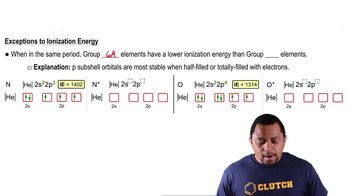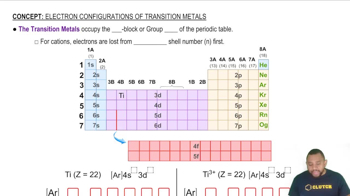Here are the essential concepts you must grasp in order to answer the question correctly.
Group 5A Elements
Group 5A elements, also known as Group 15 in the periodic table, include nitrogen, phosphorus, arsenic, antimony, and bismuth. These elements have five valence electrons, which influence their chemical behavior and oxidation states. Understanding their properties and common oxidation states is crucial for identifying which element fits specific descriptions.
Recommended video:
Group 6A vs. Group 5A Elements
Oxidation States
Oxidation states refer to the degree of oxidation of an atom in a compound, indicating how many electrons an atom has gained, lost, or shared. For Group 5A elements, common oxidation states include -3, +1, +3, and +5. Recognizing the oxidation states helps in predicting the types of compounds formed and their reactivity.
Recommended video:
Metal vs. Non-Metal Characteristics
The distinction between metals and non-metals is essential in chemistry, as it affects physical and chemical properties. Metals, typically found on the left side of the periodic table, are good conductors of heat and electricity, malleable, and ductile. In contrast, non-metals are usually brittle and poor conductors. Identifying whether a Group 5A element is a metal or non-metal is key to answering the question.
Recommended video:
 Verified step by step guidance
Verified step by step guidance

